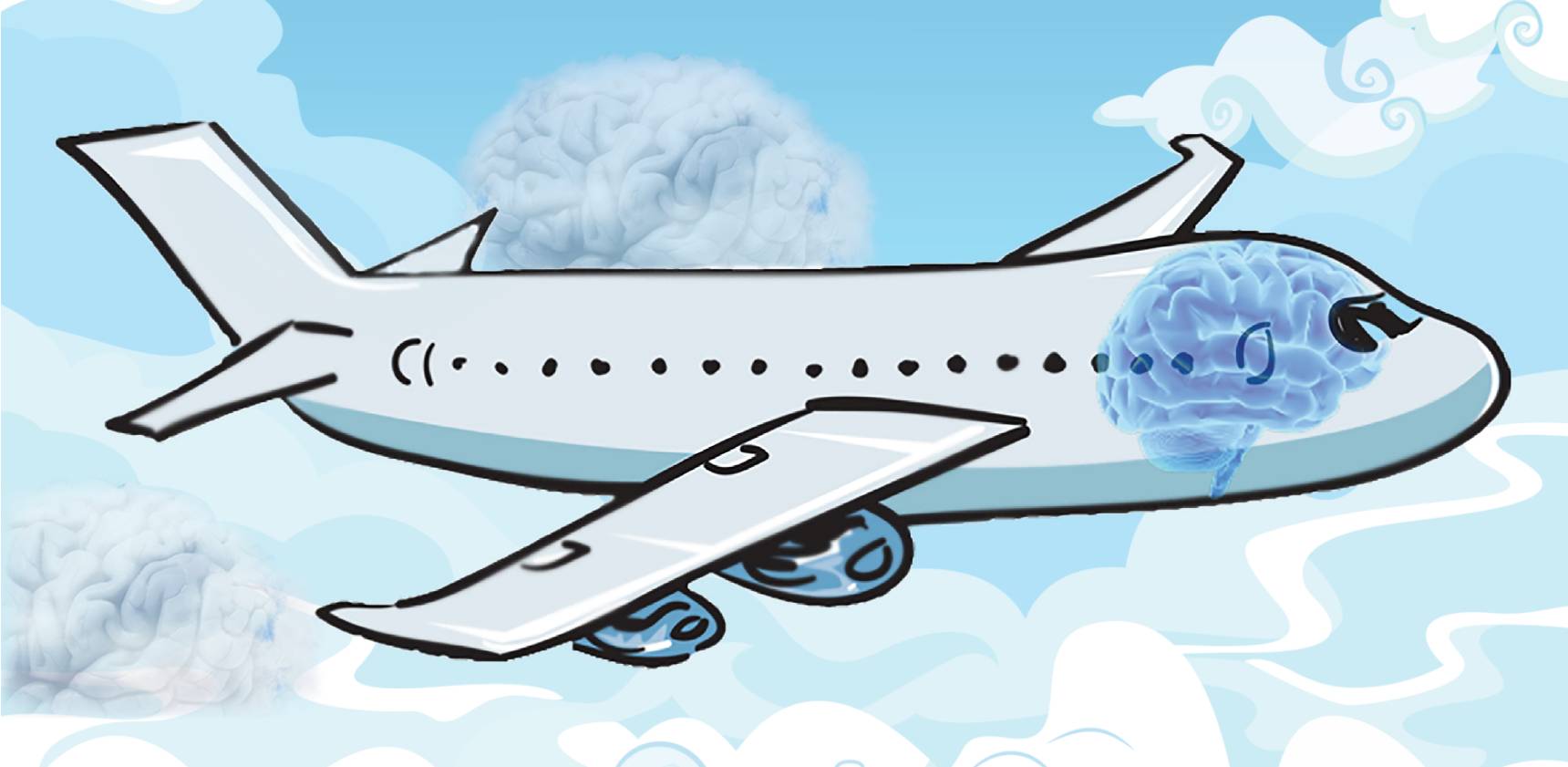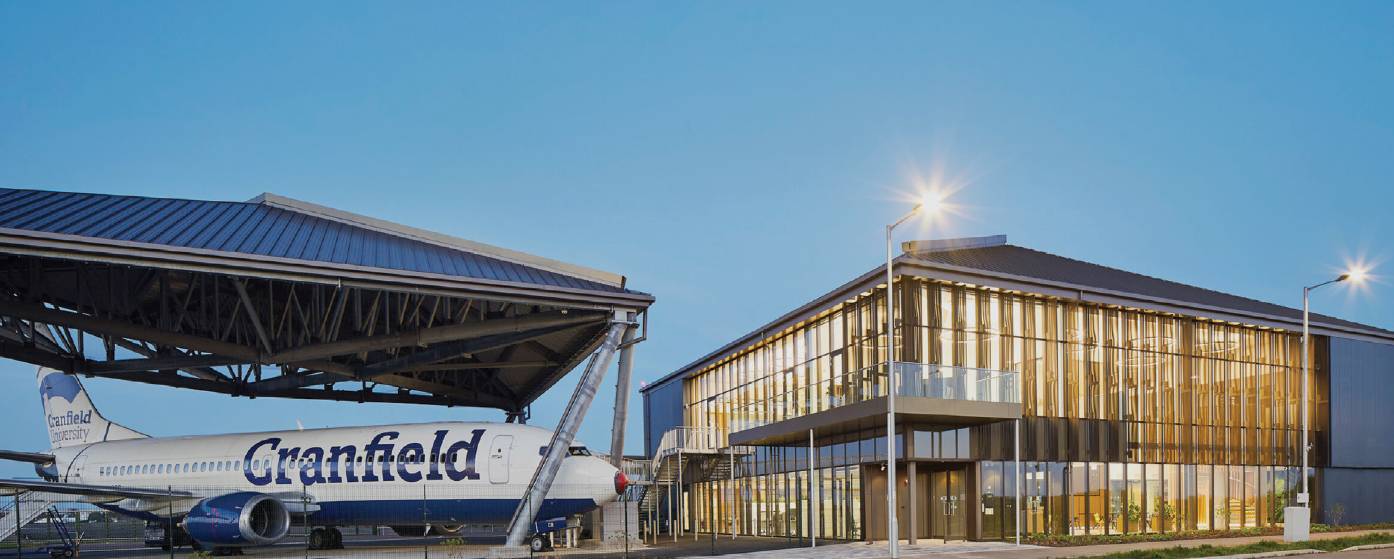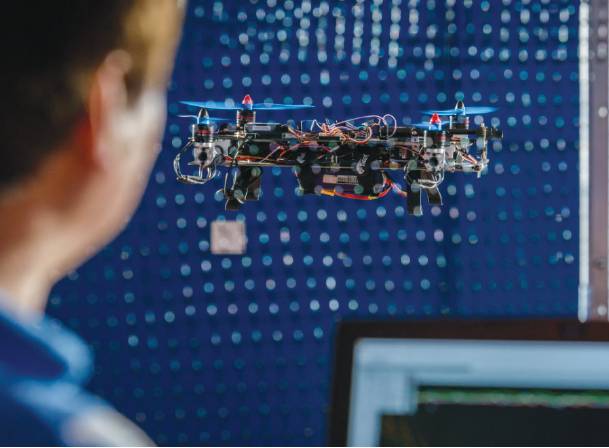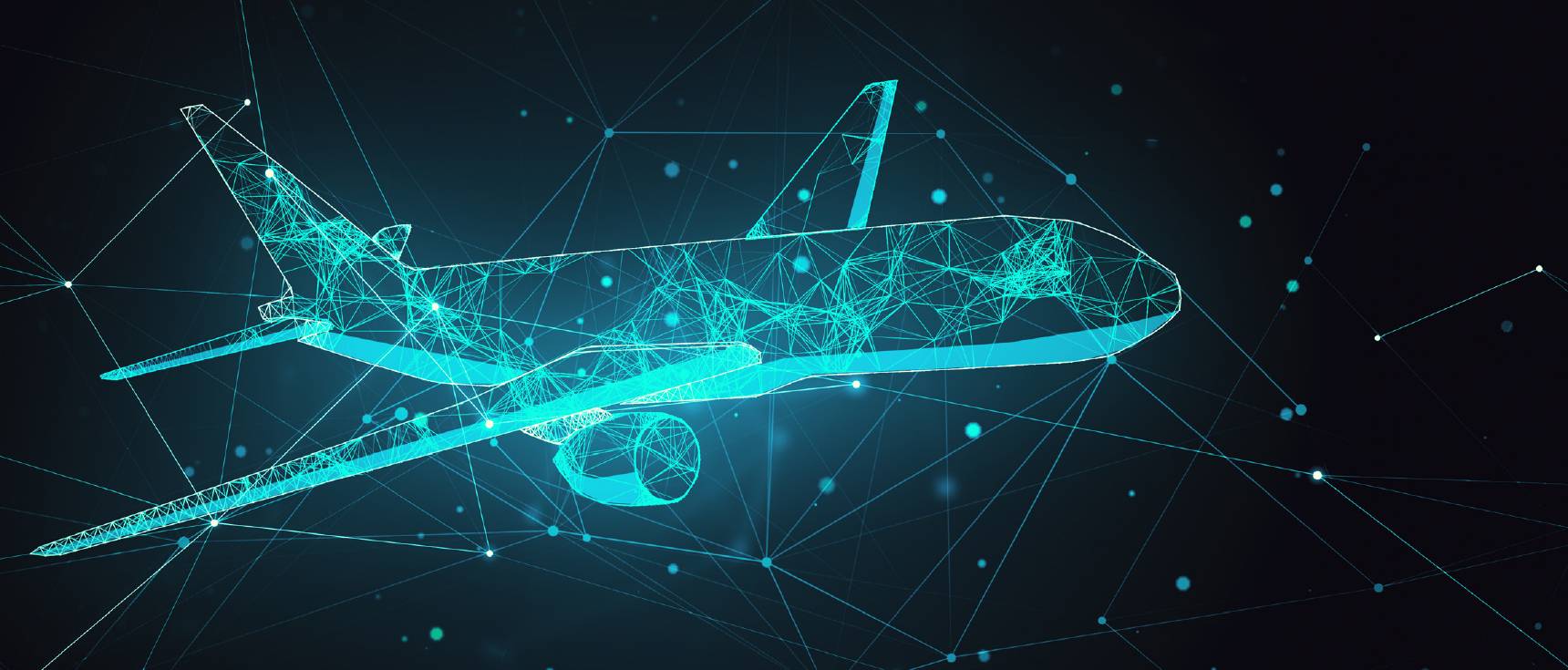AEROSPACE Artificial Intelligence and big data
Big data and the conscious aircraft
Professor IAN JENNIONS, Technical Director, and JIM ANGUS, Commercial Director, Integrated Vehicle Health Management (IVHM) Centre, Cranfield University, look at developments aimed at making aircraft assess their own airworthiness.

Weighed down by an everchanging landscape of uncertainty and commitments to sustainability, the aviation industry needs to become more agile, more efficient and less bogged down by heavy capital costs and all the associated maintenance, repair and overhaul (MRO). In other words, a lighter, streamlined proposition.
Each day an aircraft is not in use costs an estimated £200,000 in lost revenue. Based on reasonable average estimates for example, a narrowbody aircraft with 200 passengers due to make eight journeys paying £100 each equals £160,000, while a widebody aircraft with 350 passengers making one journey at £800 each, equals £280,000.
Maintenance overall is estimated to make up 10% of airline costs. In 2019, before Covid-19, global MRO spending was $83bn, with the projected spend for 2030 anticipated to be $115bn (pre-Covid-19 forecast was $130bn). Unscheduled maintenance – where there are ‘surprises’, due to such sources as component premature failure – is a major issue with operating costs due to both delays and cancellations. In 2017 alone this amounted to more than $6.5bn for widebody jets and almost $5bn for small regional jets. Minimising the time that aircraft are on the ground for maintenance also reduces risks from collision damage.
Self diagnosis
Imagine an aircraft with a human-like nervous system, aware of the health of its core organs and covered in a skin which enables it to sense damage and changes in the external environment, such as weather conditions or smoke from an ash cloud. The aircraft would be able to monitor its own health status and predict maintenance requirements, then plan visits to automated hangars where spare parts are already waiting. A machine that you can have a conversation with, rather like you would have with a human, that can relate to how it is feeling at a high level and suggest what systems may need maintenance, looking after itself through awareness of its own condition.
 The conscious aircraft principle uses sensing, advanced AI algorithms and communication technologies to increase awareness that removes risk and unnecessary costs, avoiding problems caused by component degradation, unforeseen technical failures and human error.
The conscious aircraft principle uses sensing, advanced AI algorithms and communication technologies to increase awareness that removes risk and unnecessary costs, avoiding problems caused by component degradation, unforeseen technical failures and human error.
With the reduced need for routine, planned maintenance, as well as anticipating the potential for failures, maintenance costs for a conscious aircraft would be cut by an estimated 30%. Systems could create their own orders for 3D printed replacement parts and aircraft would be able to plan visits to MRO facilities.
There will also be other direct and indirect benefits to airline sustainability.
In turn, this capability will have a major impact on overall operational efficiency of airlines, facilitating more sustainable fleet operations and supporting the introduction of new technologies aimed at reducing emissions and environmental impact.
Work by the Integrated Vehicle Health Management (IVHM) Centre, a partnership between Cranfield and Boeing, suggests the conscious aircraft is becoming a reality.
The potential cost savings are clear, but in practice, can an aircraft really be ‘conscious’? Strictly speaking, no. There are many ways of describing consciousness. Chambers describes consciousness as having conscious/subjective experiences (‘qualia’) – the hard problem.
Others, similarly describe it as awareness of awareness (metacognition). While a health management system can be aware of the systems and environment around it, it is not sentient or conscious.
An aircraft, however, can be ‘conscious’ in ways that are important to improving aircraft health, maintenance and performance.
The conscious aircraft project aims to achieve the creation of an integrated vehicle health management system that is capable of a fully aware state, able to either suggest appropriate action or take action for itself. In this sense, the term ‘conscious’ is being used as an aspiration and a metric against which to challenge current thinking.
The human-machine interface
A key element of making full use of conscious aircraft will be advances in the human-machine interface.
WITH THE CONSCIOUS AIRCRAFT MODEL, DATA IS SYNCHRONISED WITH GROUND-BASED SYSTEMS TO OPTIMISE HOW THE AIRCRAFT IS MANAGED THROUGHOUT ITS LIFE CYCLE
Large passenger aircraft are likely to have a pilot on board for the foreseeable future. It is, therefore, essential that the interface between the human brain and the conscious aircraft is ‘seamless’ and facilitates effective and timely decision-making. This is also required for ground-based maintenance engineers who will continue to be responsible for the airworthiness of the aircraft. This ‘seamless’ communication will be facilitated by advanced human-machine interfaces (HMI).
A key benefit of self-aware aircraft will be their ability to share that awareness with pilots, operators and engineers. Advanced HMIs – such as brain-computer interfaces, synthetic telepathy, brain enhancement and virtual reality/augmented reality technology will allow pilots and (digital) engineers to communicate intuitively with aircraft. In turn, this will allow for faster and better decisions when unexpected events occur during flights and reduce the risk of accidents caused by human error. A longer-term aspiration, arising from a growing understanding of the way the brain works and how it makes decisions and drawing from developments in cognitive and behavioural science, is to use advanced HMIs to allow pilots and engineers to sense the health of the aircraft as if it was a part of their own body.
Autonomous hangar operations
The Covid-19 pandemic, with the associated need for both cost efficiencies and protection for staff, has emphasised the value of autonomous hangar operations. With the conscious aircraft model, data is synchronised with ground-based systems to optimise how the aircraft is managed throughout its life cycle.
Hangars will become data-driven and based around autonomous technologies, with inspections carried out using a combination of aerial and ground-based robotics. ‘Lights out’ MRO hangars – automated facilities which only switch on when they are needed – will be hubs for remote maintenance engineers to engage with, as needed. Drones equipped with visual/thermal systems that allow for non-destructive testing will fly around the aircraft structure to locate anomalies and problematic areas, both externally and within the structure.
Data from inspections will be analysed using artificial intelligence (AI) and evidence from digital twins — virtual replicas of the aircraft systems, based on the physical equations and validated using whatever data comes to hand, including that from sensors. The simulations will be used for decision-making on airworthiness, assessing whether there is any need for maintenance now and in the future, as well as an immediate fly/no-fly decision.
 The Digital Aviation and Research Technology Centre (DARTeC) at Cranfield University. Burrell Foley Fischer LLP
The Digital Aviation and Research Technology Centre (DARTeC) at Cranfield University. Burrell Foley Fischer LLP
The use of automation and AI reduces the reliance on human interactions but AI safety, the verification, validation, security and control of safety decisions made by AI will be critical. Along with facilitating planning for future MRO to minimise operational costs and risks to human engineers, hangars of the future will reduce the risks of aircraft not being available resulting in disruption to services. This will make it more viable for airlines to work with smaller fleets. The ‘Lights out’ MRO hangar remains a future concept but research projects are piecing together the necessary elements of technology for integration.
Cranfield’s Digital Aviation Research and Technology Centre (DARTeC) was opened recently by UK Business Secretary Kwasi Kwarteng. This includes a full-scale hangar laboratory housing Cranfield’s 737-400 research aircraft and the provision for aircraft inspection using drones along with a high-level instrumentation rail to allow camera and other sensors to scan the external surfaces of aircraft for damage. The hangar lab connects up with DARTeC’s IVHM and digital MRO laboratories, set up to represent an operations control room of an airline or maintenance facility. The digital MRO lab is being used to investigate the use of cameras to inspect aircraft and control robots as they go around an airframe. Rather than relying solely on human experience and judgement, the availability of big data, machine learning and AI will mean more sophisticated and efficient decision-making processes, drawing on a broader range of insights and evidence.
Arrival of the thinking aircraft
The researchers involved with conscious aircraft-related programmes of work believe air transport operators could be using such maintenance facilities and ‘conscious’ platforms within the next twenty years. The research roadmap suggests a working ultra-low maintenance prototype aircraft could be developed by 2035 and a ‘conscious’ aircraft could enter service by 2040. Depending on research funding, Cranfield is hoping to have a whole aircraft digital twin available by 2023/4 and a prototype of a digital twin with ‘consciousness’ – in other words, with reasoning capability – by 2026.
 Cranfield University
Cranfield University
Cranfield’s IVHM Centre is already using digital twins at a sub-system level (for example, with environmental control systems) to demonstrate more accurate diagnostics and prognostics along with vehicle reasoning. This includes the ability to monitor the health of passengers and crew, as well as the aircraft.
The Framework for Aerospace Vehicle Reasoning (FAVER) tool under development at Cranfield is an example of an AI reasoning engine being used to identify how much data is needed to make accurate predictions, and whether information is needed from other systems to find the actual source of a fault, leading to targeted maintenance.
Technical roadblocks at this stage are around ensuring the resilience of the architecture and associated communications, developing the sophistication and safety of applying AI, and increasing the autonomy of robotics.
Aside from the technology, there will also be the need for regulatory approval to demonstrate that autonomous systems for maintenance can be as safe as manual, and that will not be straightforward based on the evidence from the development of autonomous cars. Work will also be needed to create business models that fit the changing industry and market needs.
Operating with thought
Another fundamental challenge comes in the form of the digital infrastructure of aviation operations. Data on thousands of health parameters, engine performance, pressure, rotor speeds, temperatures and vibration can all be communicated to the ground in real time for health monitoring. The problem is a data bottleneck in aviation: a lack of speed and capacity of data transfer at a cost that makes business sense. Compared with traditional aircraft, the new generation models are expected to produce 30 times more data.

A Boeing 787 can generate 500gb of data per flight. By 2026, the total amount of data generated by aircraft is estimated to grow to 98bn gigabytes each year. In calculations made by Rolls-Royce in 2019, operational data volumes are doubling each year, meaning the company expects the global fleet, including Rolls-Royce engines to generate 98 exabytes of data (an exabyte is 1bn gigabytes). Digital technologies are the obvious way by which any element of aviation can be transformed and MRO is no different. During a generation of business development when most sectors have embedded digital technology into their models and infrastructure, aviation is still only beginning to catch up.
The sector knows its future will be founded on transformational technologies, the third revolution of digital and sustainable tech. Crucially, the success of the third revolution in aviation will also be dependent on the MRO — how those innovations are made part of highly efficient and financially viable operations. The conscious aircraft is going to be a necessary part of any new global system. For this to happen there needs to be a change in mindset, with the long-term potential of the conscious aircraft taken into account at the design stage.

 The conscious aircraft principle uses sensing, advanced AI algorithms and communication technologies to increase awareness that removes risk and unnecessary costs, avoiding problems caused by component degradation, unforeseen technical failures and human error.
The conscious aircraft principle uses sensing, advanced AI algorithms and communication technologies to increase awareness that removes risk and unnecessary costs, avoiding problems caused by component degradation, unforeseen technical failures and human error.

